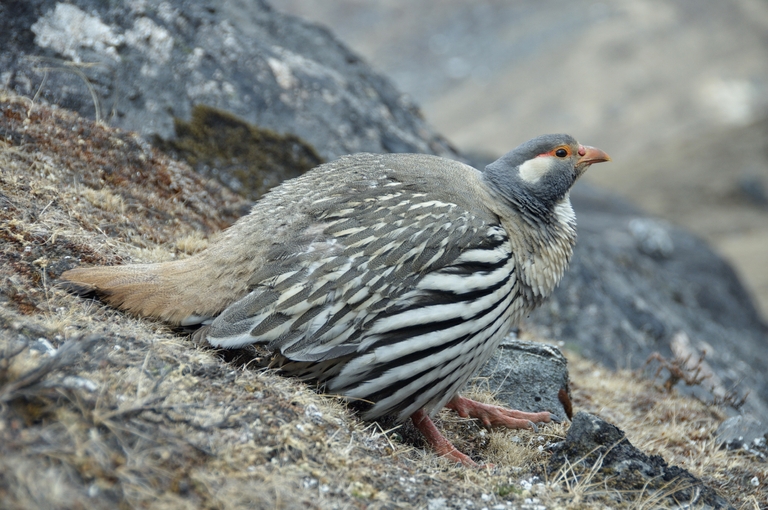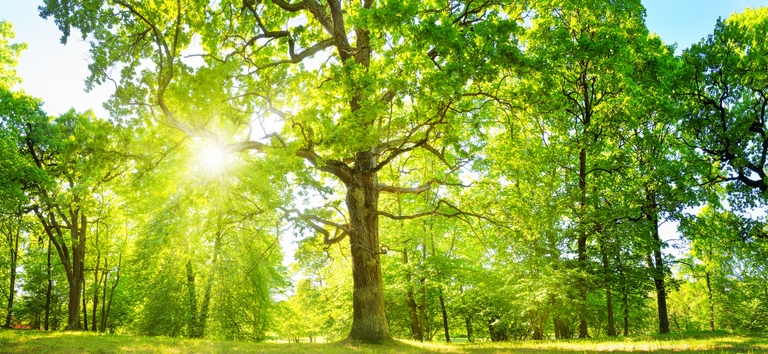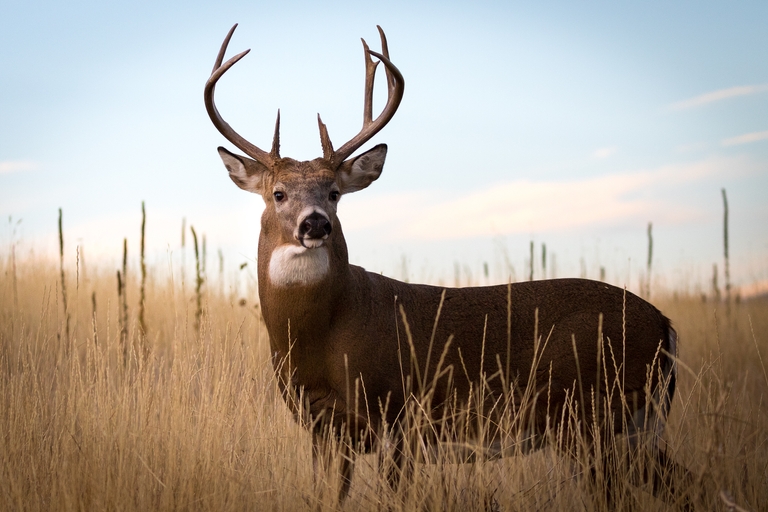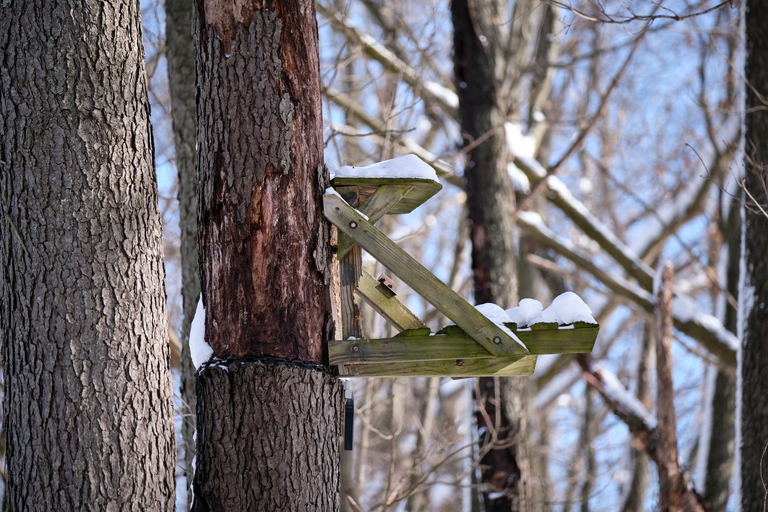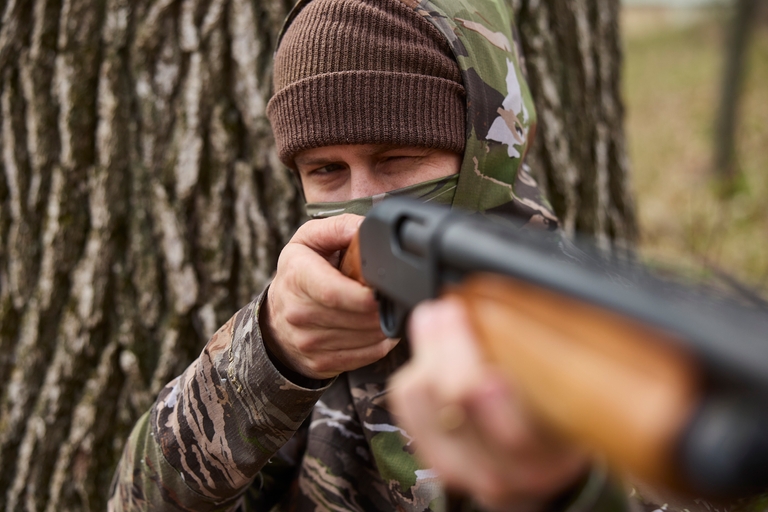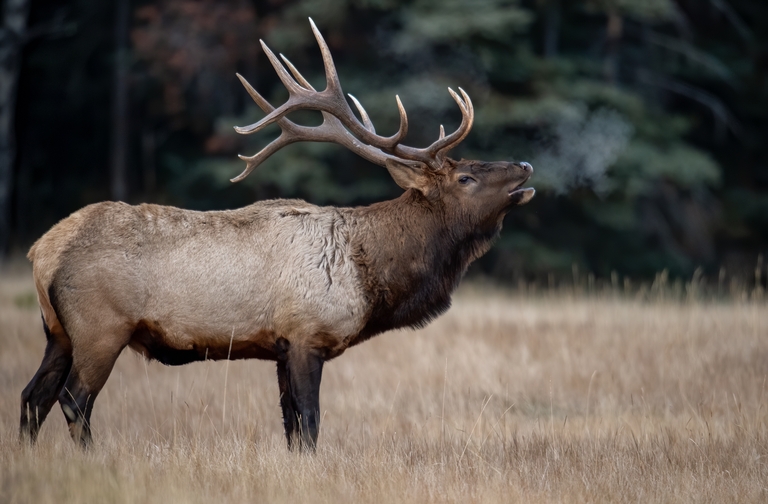Preseason Deer Scouting Tips for a Successful Fall Hunt

Success during deer season starts well before opening day.
If you want to outsmart educated bucks, it's all about putting in the preseason work that most hunters aren't willing to do. Preseason deer scouting gives you an advantage over animals that evolved to avoid you and the hunters who take shortcuts.
If you're like me, you already spend a ton of time in the woods in the fall. Family, friends, spouses, and partners don't want us there out all summer, too. Knowing what helps and what won't is the key to spending that precious preseason time wisely.
Today, we'll help you learn where to focus your efforts, how to spot early sign, and how to prepare your hunting area without pushing deer out before you even get started.

Why Scouting Before the Season Matters
Getting into hunting (and becoming a good hunter) starts with learning how to scout.
Scouting during the summer allows you to analyze your deer numbers, test your gear, and fine-tune your plans without any added distractions. Early-season work helps you avoid surprises and keeps the pressure low in your best hunting spots during the actual season.
Find the Best Stand and Blind Locations
Preseason scouting lets you observe how deer use the landscape before pressure changes their patterns. If you're scouting a new lease or public land for the first time, start with the three basics: look for natural funnels, food sources, and bedding cover.
I've had great luck identifying stand spots by walking the edge of overgrown fields or checking the corners of fields 24 hours after a rain. Preseason deer sign will stand out more clearly when the ground is soft, and you'll often spot fresh trails leading from cover to food.

Understand Deer Movement
Studying travel routes is one of the most effective tips for scouting deer. Watch how deer move between bedding and feeding areas. If you can find a trail that hugs the downwind side of a field or follows a ridge, that's a great place to set up. Work on a way to intercept them without being heard, seen, or winded.
You can also take mental notes of early-season patterns like bachelor group movements. These bucks often travel together in predictable loops during summer, giving you a solid foundation when the season opens.
Reduce Human Pressure
One of the biggest mistakes you can make is over-scouting.
Deer get wise to repeated human presence, especially older bucks. That's why I front-load my scouting in June and July and go hands-off in the weeks leading up to opening day.
Trail cameras carry the load from then until opening day. The advantage we have today, getting daily up-to-date info without stepping into the woods, is obvious.
Scouting early also gives you time to trim shooting lanes or set up blinds without pushing deer off the land. The less you disturb your hunting area before fall, the more natural it'll feel to deer when the time comes.

Smart Whitetail Deer Scouting Tips to Get Ready for Fall
Once you've identified likely stand sites and general movement patterns, it's time to put your plan into action.
Use Trail Cameras Wisely
Trail cams are great scouting tools if you use them correctly.
Set up cameras near funnels and trails leading to summer food sources like clover, planted plots, or natural browse. Be sure to place your cameras outside obvious sight lines to avoid spooking bucks.
I always set my cameras to photo mode with a short delay in early summer, then switch to video mode in late August. If you have older cameras with cards, try to check them no more than once every 2–3 weeks.
Cellular cameras are the way to go these days. Less human scent in the woods keeps those mature bucks around longer.
Find Rubs, Scrapes, and Bedding Zones
Start watching for rub lines and scrapes as summer fades into early fall.
Rubs on saplings often appear where bucks are establishing territory. While scrapes are more common in October in most of North America, mock scrapes can be helpful as scouting tools in September, especially in the south.
You may also find bedding areas in thick cover near food. Especially when scouting public land, I'll mark these areas from a distance and avoid going in unless I'm ready to hunt — knowing where deer bed without disturbing them is one of the most important aspects of whitetail deer scouting.

Use Maps to Your Advantage
Topographic and satellite maps are essential tools for any deer hunter.
Apps like HuntWise make finding pinch points, ridge saddles, and natural funnels where deer travel easy. Learn why deer travel ridges and funnels, then use an app to make finding them easier.
Mind the Wind
Wind direction matters as much in preseason scouting as during the hunt.
Always enter your preseason deer scouting areas with the wind in your face, and start building your entry and exit routes around prevailing fall winds. You will jump deer while scouting, so scout well before the season opens. This way, you can try alternate entry points when you jump one.
I've passed on great stand locations simply because the access was wrong. A stand you can't get to without jumping a bedded buck is useless.
Practice Like It's Opening Day
Preseason is a great time to fine-tune your shooting.
Try to practice from elevated positions, in hunting clothes, and under realistic conditions. Get up in an actual stand and work out any issues before the pressure's on.
Know your angles and how they'll affect your sight picture.

Preseason Deer Scouting and Hunter Education Lead to a Successful Fall
The more you know about your deer before opening day, the better your odds of success. Scouting early helps you avoid last-minute mistakes, locate promising stand sites, and understand how deer use the land before hunting pressure changes their behavior.
Careful preseason deer scouting will prepare you for fall and give you a better shot at filling the cooler. You'll also want to take advantage of the summer to get your hunter education certification to meet your state's requirements before opening day!
Hunter-Ed makes it easy to learn hunting safety essentials through our online courses. Plus, our courses are state-approved and help you meet hunter education requirements to hunt legally.
Brush up on crucial hunting safety information before the season starts by taking the Hunter-Ed course for your state!

HuntWise makes it easy to track animal behavior, add pins and notes when you find rubs or scrapes, and gain insights into wind direction for the best stand placements.
Hunter-Ed students receive a 30-Day Free Trial of HuntWise after completing the course and final exam!
To take advantage of this offer and get ready for fall, visit your student dashboard.

